A white wedding is a traditional formal or semi-formal wedding originating in Great Britain.
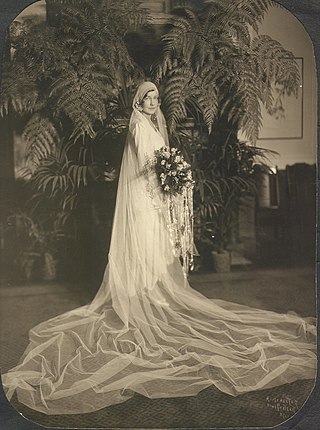
A bride is a woman who is about to be married or who is a newlywed.

Princess Helena Victoria of Schleswig-Holstein was a granddaughter of Queen Victoria of the United Kingdom. From 1917 her name was simply Princess Helena Victoria.
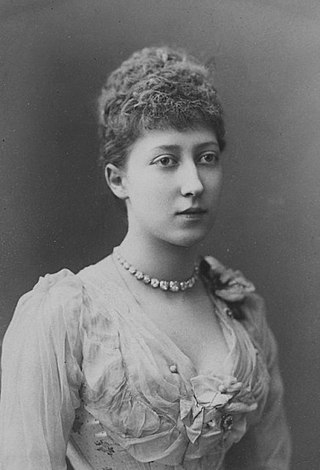
Louise, Princess Royal and Duchess of Fife was the third child and eldest daughter of King Edward VII and Queen Alexandra of the United Kingdom; she was a younger sister of King George V. Louise was given the title of Princess Royal in 1905. Known for her shy and quiet personality, Louise remained a low-key member of the royal family throughout her life.

Duke of Fife is a title in the Peerage of the United Kingdom that has been created twice, in both cases for Alexander Duff, 1st Duke of Fife and 6th Earl Fife, who in 1889 married Princess Louise, the eldest daughter of Albert Edward, Prince of Wales. The dukedom of Fife was created for a member of the British royal family by marriage, since the first holder's wife was a granddaughter of Queen Victoria.

A wedding dress or bridal gown is the dress worn by the bride during a wedding ceremony. The color, style and ceremonial importance of the gown can depend on the religion and culture of the wedding participants. In Western cultures and Anglo-Saxon cultural spheres, the wedding dress is most commonly white, a fashion made popular by Queen Victoria when she married in 1840. In Eastern cultures, brides often choose red to symbolize auspiciousness.

On 6 July 1893, Prince George, Duke of York, and Princess Victoria Mary of Teck were married at the Chapel Royal, St. James's Palace, in London, England.

The wedding dress of Princess Alexandra of Denmark was worn at her wedding to Albert Edward, Prince of Wales on 10 March 1863 in St George's Chapel, Windsor Castle. It was the first in British royal history to be photographed while being worn. The gown was made by London dressmaker Mrs James of Belgravia. It is now part of the British Royal Collection. In 2011, the dress was part of a display of royal wedding dresses at Kensington Palace.
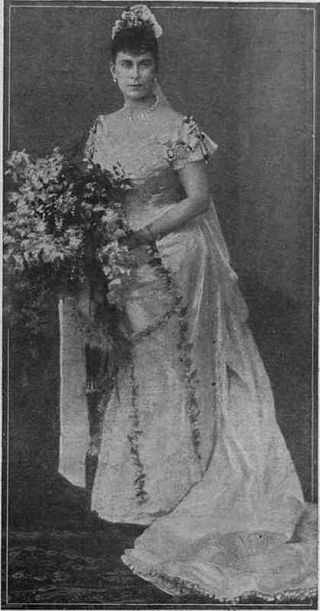
The wedding dress of Princess Victoria Mary of Teck is the gown worn by the future Queen Mary at her wedding to Prince George, Duke of York on 6 July 1893 at the Chapel Royal, St. James's Palace, in London. The dress now belongs to the British Royal Collection and is part of a collection of royal wedding dresses at Kensington Palace in London.
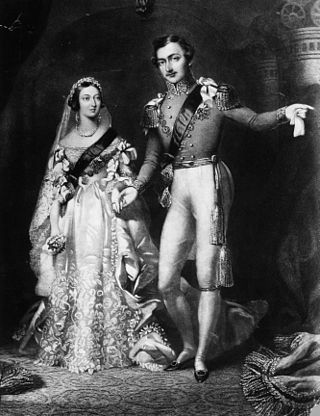
Queen Victoria of the United Kingdom married Prince Albert of Saxe-Coburg and Gotha on 10 February 1840. She chose to wear a white wedding dress made from heavy silk satin, making her one of the first women to wear white for their wedding. The Honiton lace used for her wedding dress proved an important boost to Devon lace-making. Queen Victoria has been credited with starting the tradition of white weddings and white bridal gowns, although she was not the first royal to be married in white.

The wedding dress of the American actress Grace Kelly, worn during her wedding to Prince Rainier III of Monaco on 19 April 1956, is cited as one of the most elegant and best-remembered bridal gowns of all time, and one of the most famous since the mid 20th century. One author describes the dress as a symbol of "the marital fervor" and a major influence on women who strove to "emulate Kelly's peau de soie and lace masterpiece". It was designed by Helen Rose of MGM. The dress consisted of a bodice with an attached under-bodice and skirt support. There were two petticoats, one being an attached foundation. The wedding attire included a headdress, veil, shoes and the lace- and pearl-encrusted prayer book which she carried down the aisle. To celebrate the 50th anniversary of the wedding, the Philadelphia Museum of Art displayed it at the museum between 1 April and 21 May 2006 and reported it to have been arguably its most popular exhibit.

The dress worn by Jacqueline Bouvier for her wedding to John F. Kennedy in 1953 is one of the best-remembered bridal gowns of all time.

The wedding dress of Princess Louise Margaret of Prussia was worn by her at her wedding to Prince Arthur, Duke of Connaught and Strathearn, at St. George's Chapel, Windsor, on 13 March 1879. Prince Arthur was the seventh child and third son of Queen Victoria and Prince Albert of Saxe-Coburg and Gotha.

Princess Helena, the fifth child and third daughter of Queen Victoria, wore a dress of white satin featuring deep flounces of Honiton lace, the design of which featured roses, ivy, and myrtle, for her marriage to Prince Christian of Schleswig-Holstein on 5 July 1866 at Windsor Castle, Windsor, Berkshire, England. Her headpiece was composed of orange blossom and myrtle, and the veil was also made of Honiton lace. She also wore a necklace, earrings, and brooch of opals and diamonds, a wedding gift from the Queen. Along with bracelets set with miniatures, Helena also wore the Order of Victoria and Albert.
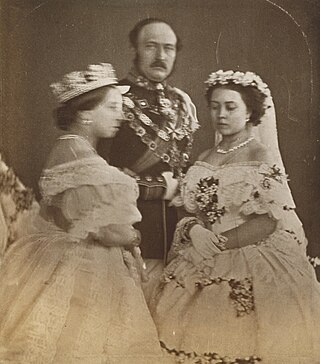
The wedding dress of Victoria, Princess Royal, was worn by the eldest daughter of Queen Victoria in 1858.

The wedding dress of Princess Helen of Waldeck and Pyrmont was worn by the bride at her wedding to Prince Leopold, Duke of Albany, on 27 April 1882 in St. George's Chapel, Windsor Castle. Prince Leopold was the youngest son of Queen Victoria and Prince Albert. Princess Helen was the daughter of George Victor, Prince of Waldeck and Pyrmont and his wife Princess Helena of Nassau.

The wedding dress of Princess Louise, Queen Victoria's sixth child and fourth daughter, was worn by her at her wedding to John Campbell, Marquess of Lorne, the heir-apparent to the 8th Duke of Argyll, on 21 March 1871 at St. George’s Chapel, Windsor Castle.

The New York Mets, founded in 1962, returned National League baseball to New York following the departure of the Brooklyn Dodgers to Los Angeles and the New York Giants to San Francisco. The Mets' uniform was designed to incorporate elements of both departed clubs, with the Dodgers' royal blue becoming the Mets' primary color and the Giants' orange the trim color, along with the Giants' "NY" crest adopted as the new team's cap logo. The original Mets uniform had a "clean and classic" look that, while it has undergone a number of changes over the course of the team's history, has never been substantially revised. The basic template has always been a conventional short-sleeved baseball uniform with "Mets" in cursive script on a white pinstriped home jersey, and either "NEW YORK" or "Mets" on a gray road jersey, with the lettering and numerals in blue outlined in orange. The most notable variations were the "racing stripe" uniforms of the 1980s and early '90s, and the addition of black as a trim color along with black alternate jerseys and caps that were worn from 1998 through 2011. For 2012, in recognition of its 50th Anniversary, the club restored its classic look by removing the black trim from all of its uniforms and phasing out the black jerseys and caps. Since then the club has adopted blue alternate jerseys and caps but has generally worn its primary uniform in most games, home and away.

The wedding dress of Princess Maud of Wales was worn at her wedding to Prince Carl of Denmark on 22 July 1896 in the Private Chapel at Buckingham Palace. Maud was the youngest daughter of Albert Edward, Prince of Wales and Alexandra, Princess of Wales; Carl was the second son of Crown Prince Frederick and Crown Princess Louise of Denmark.
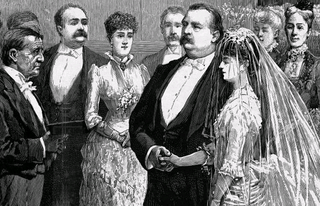
The wedding of President Grover Cleveland and his bride Frances Folsom took place on June 2, 1886, in the Blue Room of the White House. Cleveland was the sitting President of the United States, and he remains the only U.S. president to be married in the White House. The wedding was highly publicized, though only close associates of the bride and groom were permitted to attend the ceremony. A reception was held as a public event one week after the ceremony.




















